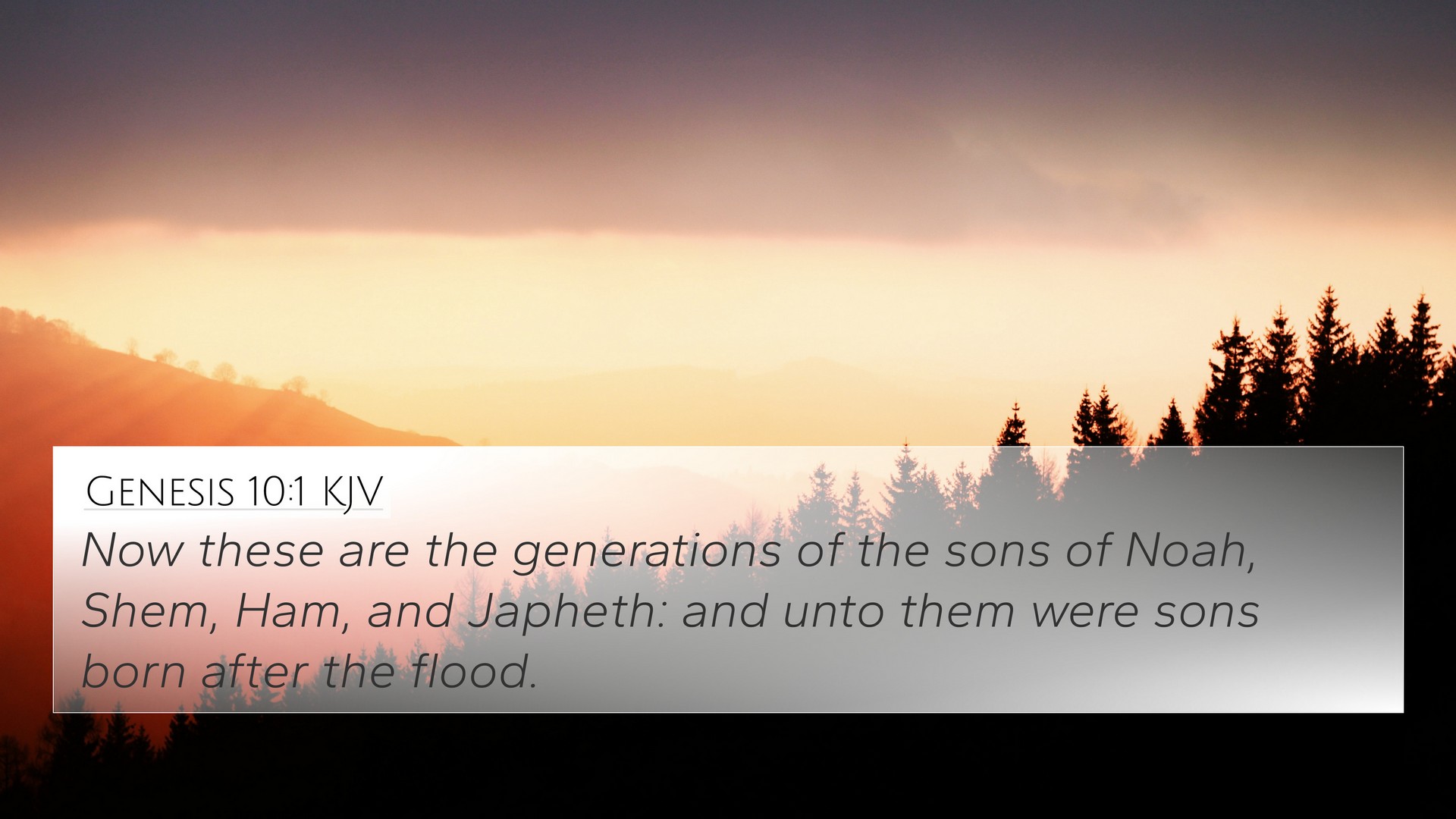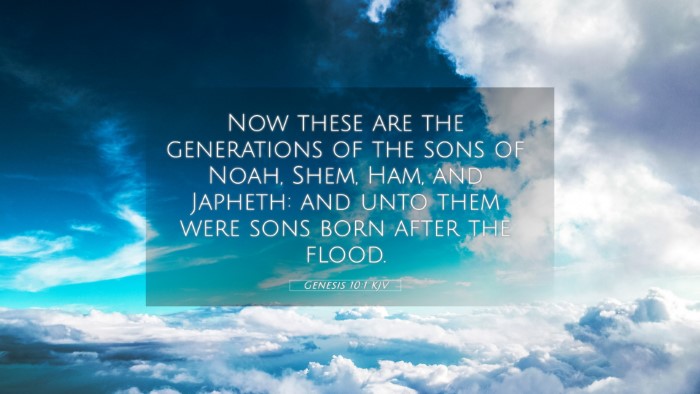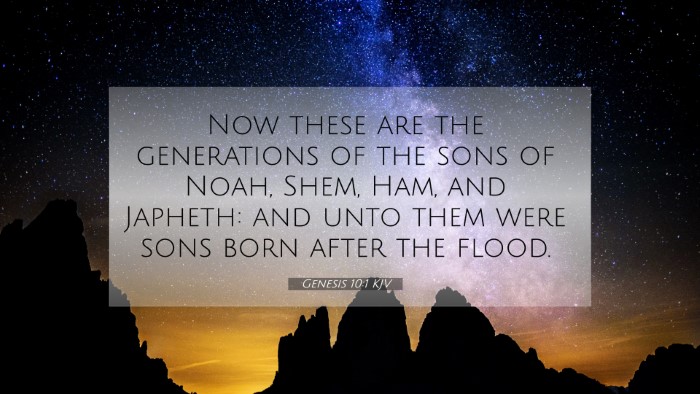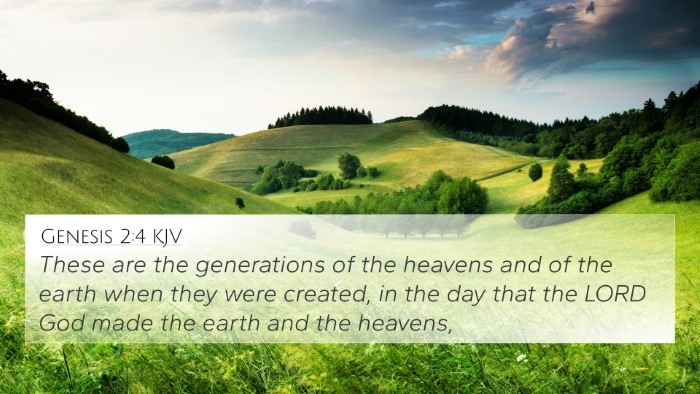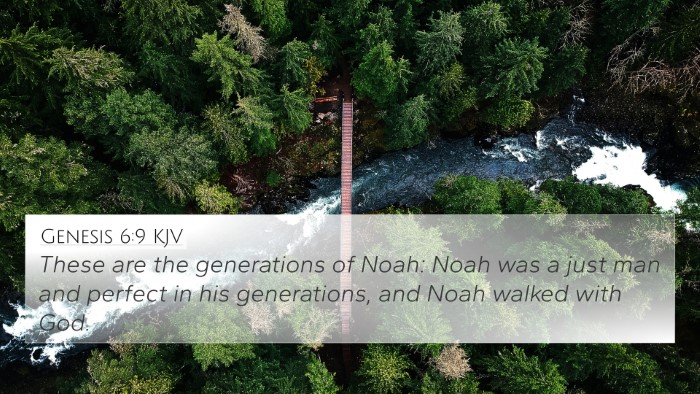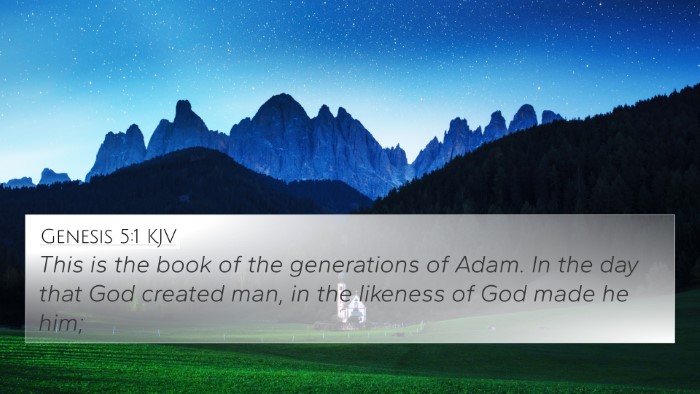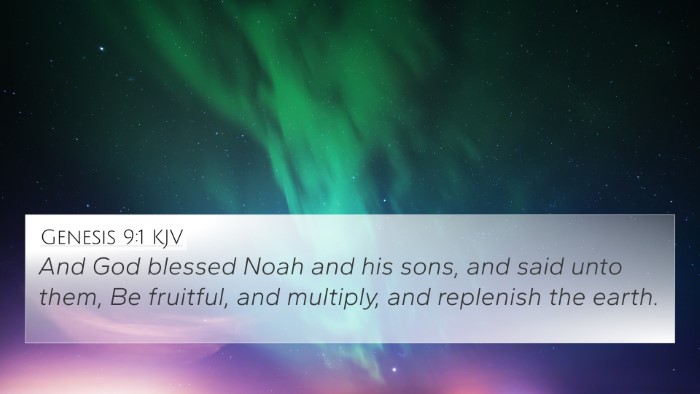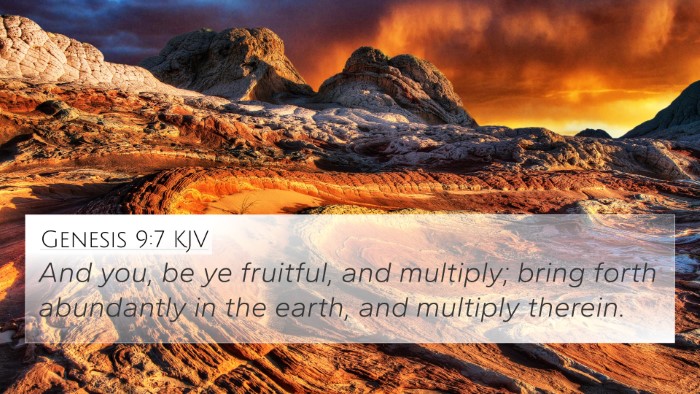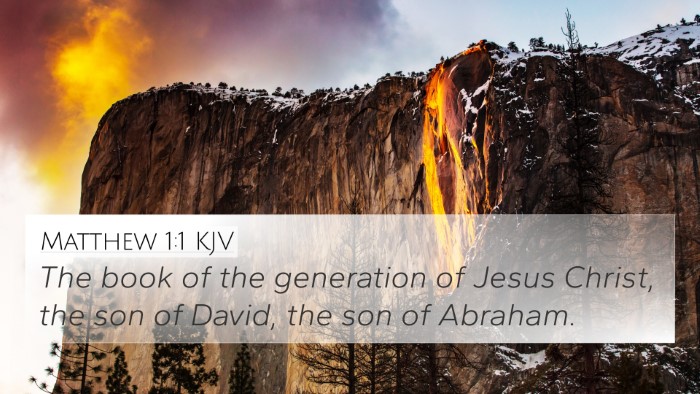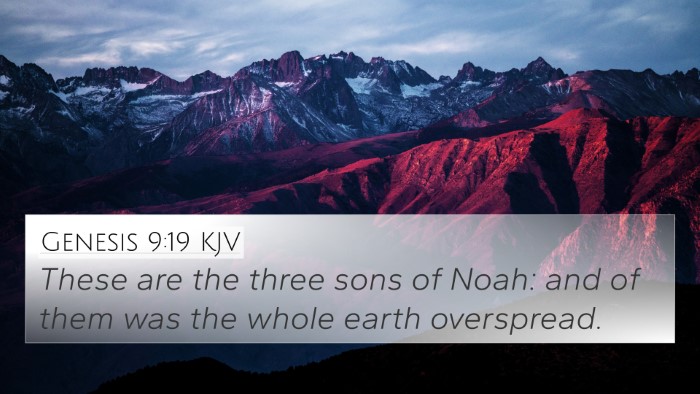Understanding Genesis 10:1: A Summary of Insights from Public Domain Commentaries
Genesis 10:1 states: "Now these are the generations of the sons of Noah, Shem, Ham, and Japheth: and unto them were sons born after the flood." This verse serves as a pivotal moment in the Biblical narrative, marking a significant transition from the flood narrative to the repopulation of the earth through Noah’s sons. Our analysis draws from various public domain commentaries, including those of Matthew Henry, Albert Barnes, and Adam Clarke, to provide a comprehensive interpretation.
Contextual Overview
Genesis 10 is often referred to as the "Table of Nations," detailing the descendants of Noah and their subsequent spread across the earth. This verse introduces the lineage of Shem, Ham, and Japheth, setting the stage for the fulfillment of God’s command to multiply and fill the earth (Genesis 9:1).
Insights from Commentaries
- Matthew Henry: Henry emphasizes the importance of this genealogical record, noting that it highlights God's faithfulness to His promise of preserving mankind through Noah's lineage. The phrase "sons born after the flood" suggests the continuation of human history and God's providence.
- Albert Barnes: Barnes expands on the significance of the three sons, indicating that each line leads to distinct nations that play critical roles in biblical history. He discusses how the dispersion of these nations fulfills God's plan for humanity to inhabit the earth.
- Adam Clarke: Clarke provides a detailed breakdown of the names and their meanings. He notes the broader implications of these relationships, signaling the origins of various peoples and cultures as outlined in the subsequent verses of this chapter.
Bible Verse Cross-References
Understanding Genesis 10:1 can be enriched through cross-referencing with the following Bible verses:
- Genesis 9:1: God's command to Noah to "be fruitful and multiply" establishes the context for the subsequent generations.
- Genesis 10:32: This verse summarizes the generations of Noah's sons, linking them back to the emergence of distinct nations.
- Acts 17:26: Paul notes that God made from one blood every nation of men, reinforcing the unity of humanity stemming from Noah.
- 1 Chronicles 1:4-27: This passage further details the genealogies stemming from Noah's sons, providing a wider context of biblical history.
- Matthew 1:2-16: The New Testament genealogy traces the lineage to Abraham, showing the continuity of God's plan through generations.
- Luke 3:36-38: Luke's genealogy also reaches back to Noah, emphasizing the significance of His lineage in the context of Christ’s lineage.
- Romans 5:12: Understanding the theological implications of sin entering the world through one man aligns with the narrative of Noah and his descendants.
Thematic Connections
Kingdom themes emerge from Genesis 10:1 that resonate throughout Scripture:
- Divine Providence: The unfolding of human history post-flood showcases God's sovereignty.
- Unity in Diversity: The descendants of Noah highlight the varied cultures and nations that emerge yet share a common ancestry.
- Generational Blessing: The mention of "sons" indicates the idea of inheritance and the passing of blessings through generations.
Tools for Cross-Referencing
For deeper studies on Genesis 10:1 and its interconnected verses, consider utilizing:
- Bible Concordance
- Cross-Reference Bible Study Guides
- Bible Reference Resources
- Bible Chain References
Conclusion
Genesis 10:1 serves not only as a historical account but also sets forth theological implications about God's plan for humanity post-flood. Through the insights gained from Matthew Henry, Albert Barnes, and Adam Clarke, the understanding of this verse can be expanded through various inter-Biblical dialogues, connecting it with significant themes and genealogies throughout the Scripture. When seeking to understand the connections between Bible verses, this verse provides a foundational start for exploring the rich tapestry of God's narrative and the lineage of faith across generations.
